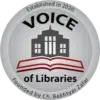An anthology is a collection of literary works that is compiled and published as a single volume or set of volumes. Anthologies are often organized around a specific theme, genre, or period, and they may include a wide range of literary forms, such as poetry, fiction, nonfiction, and drama.
There are many different types of anthologies, and they can be published by a variety of organizations, including academic presses, literary organizations, and commercial publishers. Anthologies may be intended for use in educational or research settings, or they may be published for a general audience.
Anthologies can be helpful for students and researchers who are studying a particular literary period, genre, or theme, as they provide a convenient and comprehensive way to access a wide range of works in one place. They can also be useful for readers who are interested in exploring a particular type of literature or in discovering new authors. Some popular anthologies include “The Norton Anthology of English Literature” and “The Best American Short Stories.”
A library anthology is a collection of literary works that is compiled and published as a single volume or set of volumes. Anthologies are often organized around a specific theme, genre, or period, and they may include a wide range of literary forms, such as poetry, fiction, nonfiction, and drama.
Library anthologies are typically intended for use in educational or research settings, and they are often used as reference materials or teaching aids. They may be published by academic presses, literary organizations, or other groups, and they are often available in libraries or other research centers.
Library anthologies can be helpful for students and researchers who are studying a particular literary period, genre, or theme, as they provide a convenient and comprehensive way to access a wide range of works in one place. They can also be useful for readers who are interested in exploring a particular type of literature or in discovering new authors.

